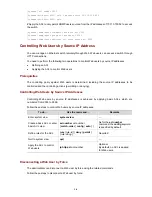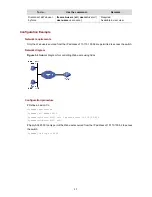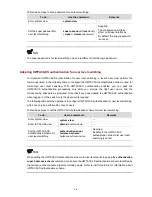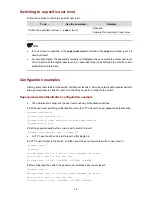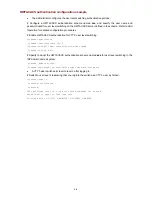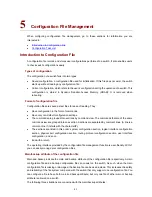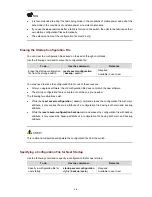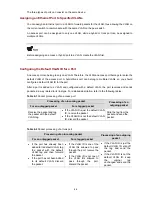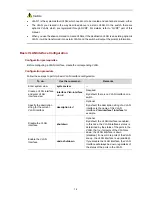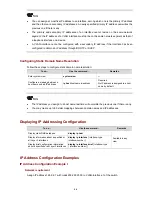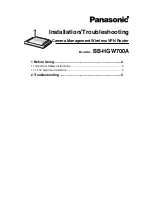
Figure 6-3
Format of VLAN tag
A VLAN tag comprises four fields: tag protocol identifier (TPID), priority, canonical format indicator (CFI),
and VLAN ID.
z
The 16-bit TPID field with a value of 0x8100 indicates that the frame is VLAN tagged. On the 3Com
series Ethernet switches, the default TPID is 0x8100.
z
The 3-bit priority field indicates the 802.1p priority of the frame. Refer to the “QoS-QoS profile” part
of this manual for details.
z
The 1-bit CFI field specifies whether the MAC addresses are encapsulated in the canonical format
for the receiving device to correctly interpret the MAC addresses. Value 0 indicates that the MAC
addresses are encapsulated in canonical format; value 1 indicates that the MAC addresses are
encapsulated in non-canonical format. The field is set to 0 by default.
z
The 12-bit VLAN ID field identifies the VLAN the frame belongs to. The VLAN ID range is 0 to 4095.
As 0 and 4095 are reserved by the protocol, a VLAN ID actually ranges from 1 to 4094.
The Ethernet II encapsulation format is used here. Besides the Ethernet II encapsulation format, other
encapsulation formats such as 802.2 LLC and 802.2 SNAP are also supported by Ethernet. The VLAN
tag fields are also added to frames encapsulated in these formats for VLAN identification.
VLAN ID identifies the VLAN to which a packet belongs. When a switch receives a packet carrying no
VLAN tag, the switch encapsulates a VLAN tag with the default VLAN ID of the inbound port for the
packet, and sends the packet to the default VLAN of the inbound port for transmission. For the details
about setting the default VLAN of a port, refer to
Configuring the Default VLAN ID for a Port
.
MAC address learning mechanism of VLANs
Switches forward packets according to the destination MAC addresses of the packets. So that switches
maintain a table called MAC address forwarding table to record the source MAC addresses of the
received packets and the corresponding ports receiving the packets for consequent packet forwarding.
The process of recording is called MAC address learning.
After VLANs are configured on a switch, the MAC address learning of the switch has the following two
modes.
z
Shared VLAN Learning (SVL): the switch records all the MAC address entries learnt by ports in all
VLANs to a shared MAC address forwarding table. Packets received on any port of any VLAN are
forwarded according to this table.
z
Independent VLAN Learning (IVL): the switch maintains an independent MAC address forwarding
table for each VLAN. The source MAC address of a packet received on a port of a VLAN is
recorded to the MAC address forwarding table of this VLAN only, and packets received on a port of
a VLAN are forwarded according to the VLAN’s own MAC address forwarding table.
6-3

